[row]
[column md=”12″]
Carpet Shopping Tips
Carpeting is the most popular floor covering in the US, beating out hardwood floors and tile. It can be relatively inexpensive and provides comfort and insulation. There have been significant, technological advances in stain resistance, making it a great option for many people.
Making the decision to install carpeting in your home may be an easy one, but deciding which carpeting best suits your lifestyle and budget may prove more complicated. There are several things you should know before shopping for carpet that will help you make an informed choice.
[/column]
[/row]
[row]
[column md=”12″]
Materials
Carpeting is made from both synthetic and natural fibers. Most of the carpeting produced in the United States is made from synthetic fibers – nylon, olefin, polyester or acrylic. Synthetic options can be very affordable and have good ratings for resiliency as well as abrasion, soil and mildew resistance. With technological advances, some premium synthetic fibers compare to the performance of wool.
Natural fibers include wool and cotton, although cotton is not widely used for carpeting. Wool carpeting is a premium material and can be cost prohibitive to some. However, it can be a good investment due to its durability and long wear.
[/column]
[/row]
Carpet Fibers
[row]
[column md=”6″]

Staple and BCF fiber diagram from Abrar Ahmed blog.
[/column]
[column md=”6″]
How the carpet fibers are constructed is also important. Carpeting fibers fall into two categories, Staple or Bulked Continuous Filament (BCF).
Staple yarns – Many higher-end carpeting products use staple yarns– which can be made from natural (wool) or synthetic fibers. These types of yarns are constructed from fibers that are shorter in length (up to 7” – 8”) and plied together, spun and twisted to form longer lengths. Because of the shorter nature of these fibers, they are more flexible and give more opportunity for different styles in the tufting and weaving stages. Staple yarns are more consistent in size– which makes them well suited for solid color carpeting. One disadvantage to staple yarns is shedding, which is a natural result of the cut fibers. The shedding is usually short-lived – only a few weeks – and is not an indication of a low quality product. Shedding can be an issue for people with allergies or asthma.
Bulked Continuous Filament (BCF) is just as it sounds; it is manufactured in one long continuous strand. These long strands are twisted together and set with heat to retain their shape. BCF yarns can be made in different ways to provide a variety of textures. Unlike staple fibers, BCF yarns do not shed. There are fewer steps involved in manufacturing BCF yarns, making it a less expensive material. With recent technological advances, BCF fibers can be made into styles once reserved for staple yarns.
[/column]
[/row]
[row]
[column md=”12″]
Carpet Density
Density will tell you how much pile yarn was used to make the carpet and how tightly packed it is. This can easily be tested by “schmushing” your fingers into the carpeting; how easily you can reach the backing material with your fingertips determines the density. As a general rule, the denser the carpet the longer it will wear.
[/column]
[/row]
Carpet Styles
[row]
[column md=”6″]

Cut and loop pile diagram from World Floor Covering Assoc.
[/column]
[column md=”6″]
The style of carpeting can be categorized into three areas – looped, cut, or cut and loop pile.
Loop pile carpeting is made from a series of uncut loops. This style can be woven or tufted. A well-known example of loop carpeting is Berber. Many loop pile carpeting is low profile and by nature provides fewer, underfoot cushioning. Within the loop style you can find level loop, textured loop and multilevel loop.
[/column]
[/row]
[row]
[column md=”6″]
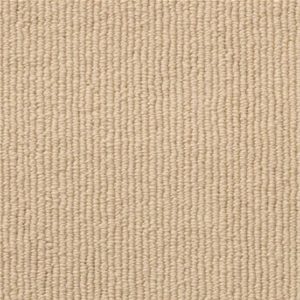
Tufted loop wool carpeting from the Alluring collection at Hibernia.
[/column]
[column md=”6″]
Cut pile carpeting is made from cut ends of the pile yarn. Examples of this style are Saxony or plush.
[/column]
[/row]
[row]
[column md=”6″]

Textured cut pile carpeting, 100% Stainmaster Premier BCF Nylon from Camelot’s Glamour collection.
[/column]
[column md=”6″]
Lastly there is Cut and Loop pile, which uses a combination of the two to make patterns and textures. Within this category you can have Level Cut and Loop or Multilevel Cut and Loop.
[/column]
[/row]
Woven or Tufted Carpet Backing
[row]
[column md=”6″]
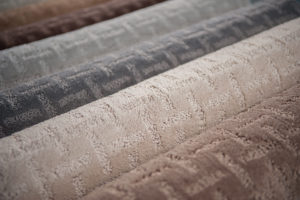
Karastan’s Dramatic Details is an example of Cut and Loop pile that gives carpeting pattern and texture.
[/column]
[column md=”6″]
Woven or Tufted refers to how the yarns are secured to the carpet backing. Tufted carpet yarn uses needles that insert the yarn into the backing material and is held in place with another small loop, similar to how a sewing machine works. The backing is then covered with an adhesive and a secondary backing material is attached to stabilize the carpet.
Woven carpet is made on looms and was the traditional way of making carpeting. This method is more complex, with the looms interlacing the lengthwise and widthwise yarns to form a cloth. This process is more labor intensive and takes more time, making this type of carpeting more expensive.
[/column]
[/row]
Dye Processes
[row]
[column md=”6″]
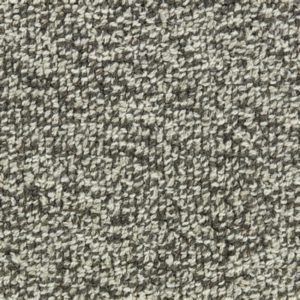
Hibernia’s Dunmore style carpeting is an example of space dyeing where multiple colors are applied to yarn to give it a variegated look.
[/column]
[column md=”6″]
The way carpeting yarn is dyed can make a difference in how it holds its color and resists fading. There are several dying methods depending on the performance qualities being met. Some dying happens before the carpet is made, other dying happens after the carpet has been manufactured, but before final backing is applied.
Solution dyeing happens with Bulk Continuous Filament (BCF) production, the filaments are dyed as they are extruded. Pigment is introduced into the heated polymer before extrusion. This process is known for its colorfastness. The color is consistent throughout the fiber; color is not just sitting on the surface. This method has excellent fade resistance and colorfastness, but is limited to manufacturer-produced colors.
Yarn dyeing is where the process happens in the yarn stage, prior to the carpet being manufactured. This process lends itself to more color flexibility. Yarn can be dyed in skeins, and is typically used for nylon and wool yarns. This works well for solid and custom colors.
Space dyeing happens when multiple colors are applied to yarn in intervals; think of variegated yarn for knitting. This can appear in finished carpeting as flecks or an effect of random design.
For post-dying methods there is Beck dyeing, printing and continuous dyeing.
The Beck dyeing method, the carpet is dyed in one piece using a large vat or beck containing the dye.
Continuous dyeing methods apply the dye as the carpet moves under the dye applicator, and can accommodate any length and up to 12-foot wide.
[/column]
[/row]
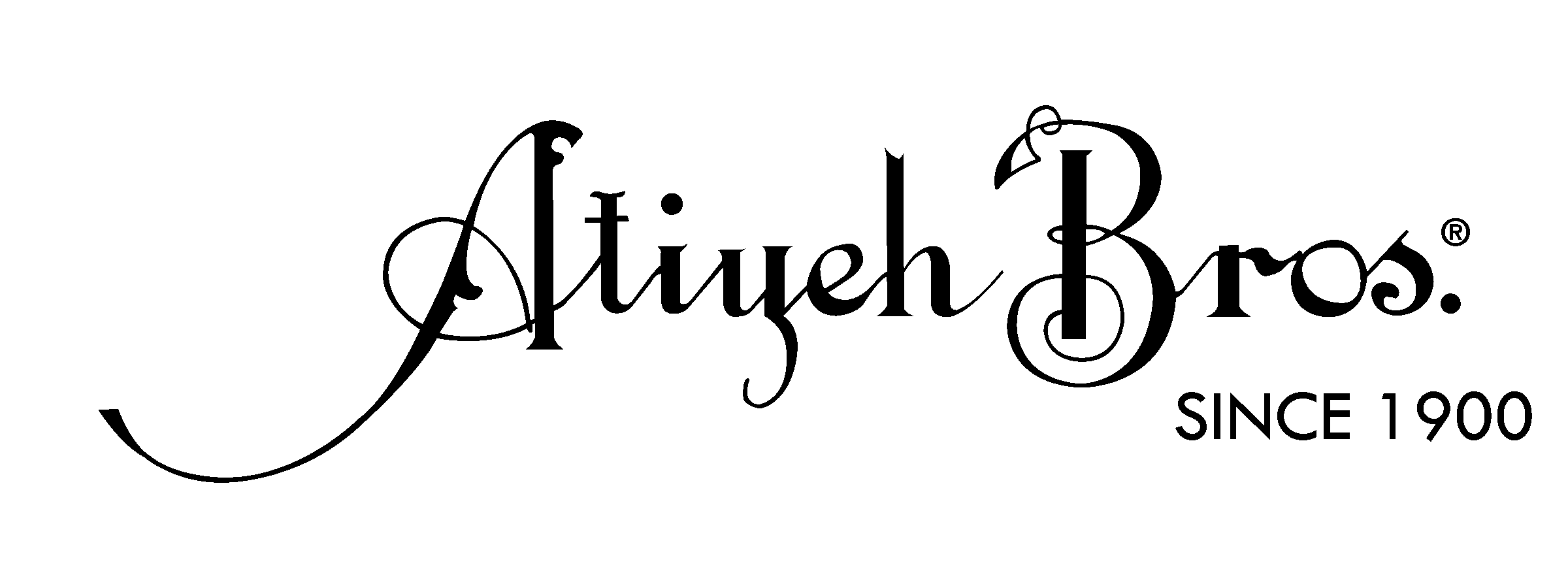
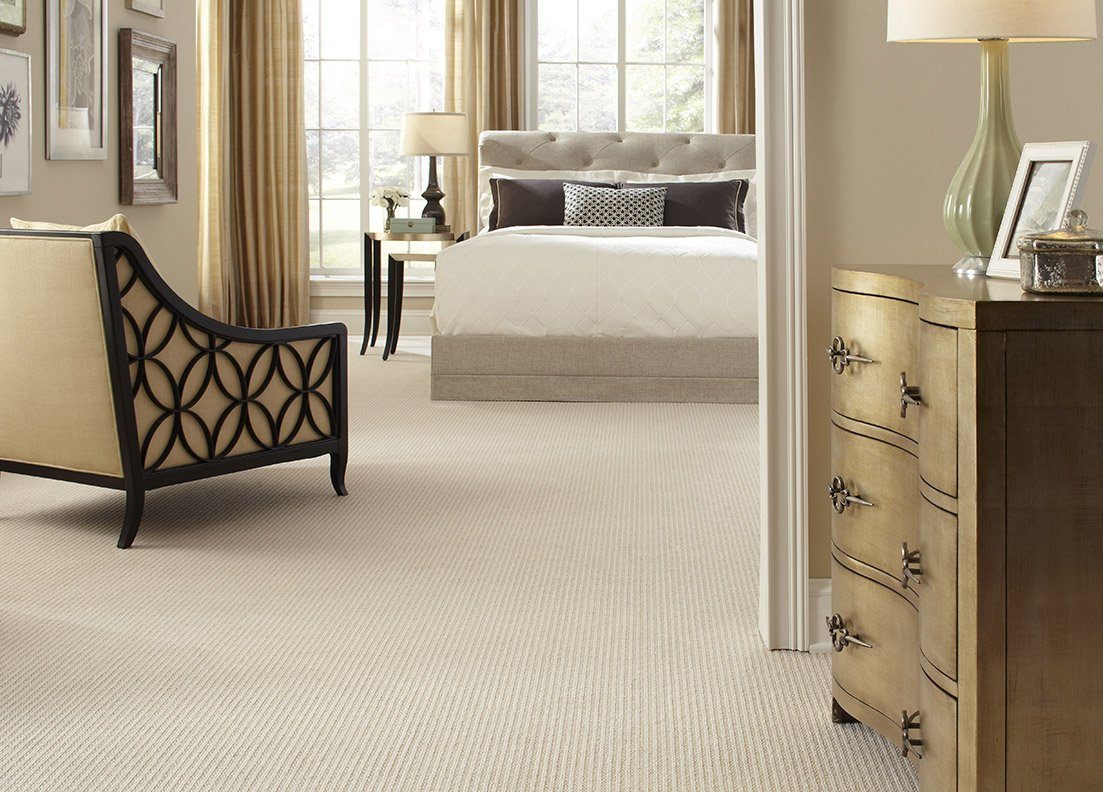
0 Comments